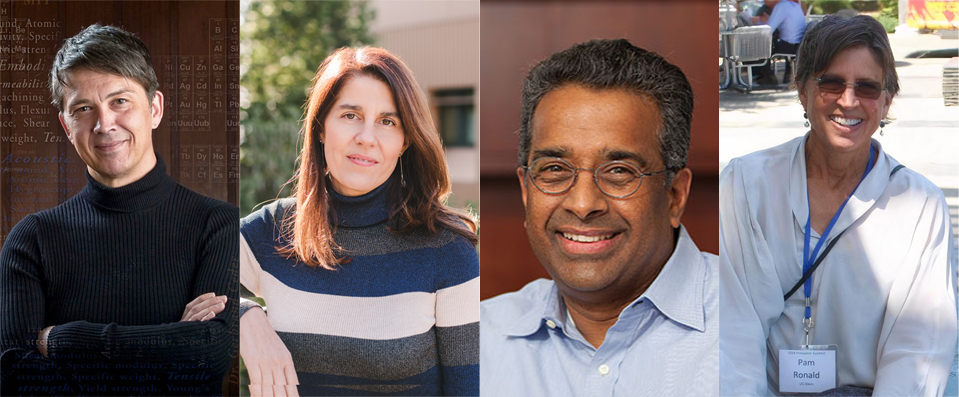Four Lawrence Berkeley National Laboratory (Berkeley Lab) scientists and an affiliate scientist have been elected to the American Academy of Arts and Sciences, a prestigious organization honoring excellence in science, the humanities and arts, and policy and communication.
The 242-year-old academy supports multidisciplinary research to advance the country’s common good. Current focus areas include energy and environment, science and technology, and global affairs. The Berkeley Lab members were among 261 new members announced recently.
The new members are faculty scientists Gerbrand Ceder, Alessandra Lanzara, Ramamoorthy Ramesh and Pamela Ronald and affiliate scientist Omar Yaghi.
Gerbrand Ceder is a senior faculty scientist in the Materials Sciences Division and a materials science and engineering professor at UC Berkeley. His research group uses computations, machine learning and experimentation to study relationships between materials’ structures and their physical and chemical properties. The goal is to better design high-quality functional materials for energy storage applications, including lithium, sodium and multi-valent ion-based batteries.
Alessandra Lanzara is a senior faculty scientist in the Materials Sciences Division, the C. Kittel Professor of Physics at UC Berkeley, and the founder and director of the university’s Center for Sustainable Materials and Innovation. Lanzara’s research focuses on a fascinating class of new materials, known as quantum materials, where quantum phenomena drive exceptional new properties. Her main focus is on unconventional superconductivity and two-dimensional van der Waals heterostructures. Her group has pioneered and uses new, advanced techniques, including time-, angle- and spin-resolved photoemission spectroscopy, to understand the fundamental physics that drives these properties.
Ramamoorthy Ramesh is a senior faculty scientist in the Materials Sciences Division and a professor of materials science and engineering and physics at UC Berkeley. His lab studies complex functional oxides to develop nanomaterials for improved computing power and low-power electronics. He is recognized globally for his contributions to the complex functional oxides field and pioneered research in areas including the materials physics of ferroelectrics and multiferroics.
Pamela Ronald is a faculty scientist in the Environmental Genomics and Systems Biology Division, the director of Grass Genetics at the Joint BioEnergy Institute, and a distinguished professor in the department of plant pathology and the Genome Center at UC Davis. Ronald studies plant genes that control resistance to disease and tolerance of environmental stress. Her work includes isolation of a gene that enables rice to survive weeks of flooding and dramatically increases yield, improving food security globally for subsistence farmers.
Omar Yaghi is an affiliate scientist in the Materials Sciences Division, former director of the Molecular Foundry user facility at Berkeley Lab, and a professor of chemistry at UC Berkeley. His research group has pioneered metal-organic frameworks (MOFs): synthetic, porous materials created by binding individual metal atoms or clusters and organic molecules in repeating patterns to form a crystal lattice. MOFs could enable exciting new technologies, including devices that capture and store greenhouse gases, next-generation batteries and supercapacitors, and platforms for efficient water filtration and drug delivery.
# # #
Founded in 1931 on the belief that the biggest scientific challenges are best addressed by teams, Lawrence Berkeley National Laboratory and its scientists have been recognized with 14 Nobel Prizes. Today, Berkeley Lab researchers develop sustainable energy and environmental solutions, create useful new materials, advance the frontiers of computing, and probe the mysteries of life, matter, and the universe. Scientists from around the world rely on the Lab’s facilities for their own discovery science. Berkeley Lab is a multiprogram national laboratory, managed by the University of California for the U.S. Department of Energy’s Office of Science.
DOE’s Office of Science is the single largest supporter of basic research in the physical sciences in the United States, and is working to address some of the most pressing challenges of our time. For more information, please visit energy.gov/science.
